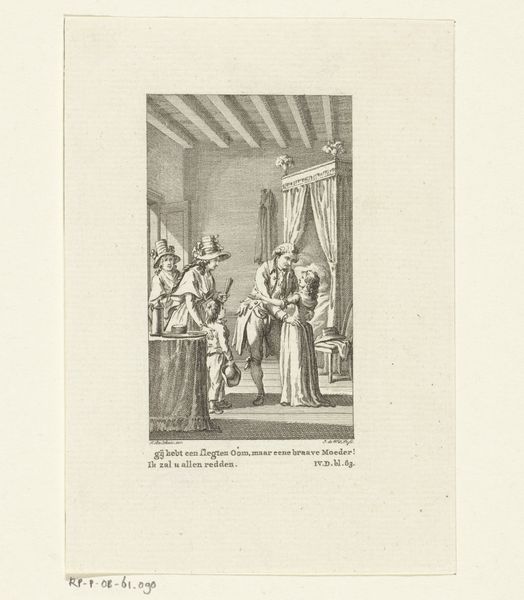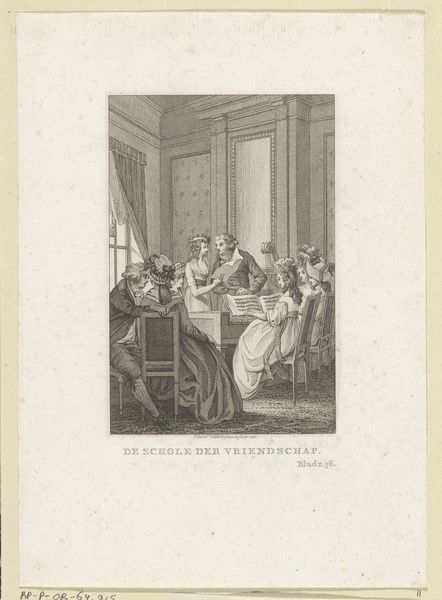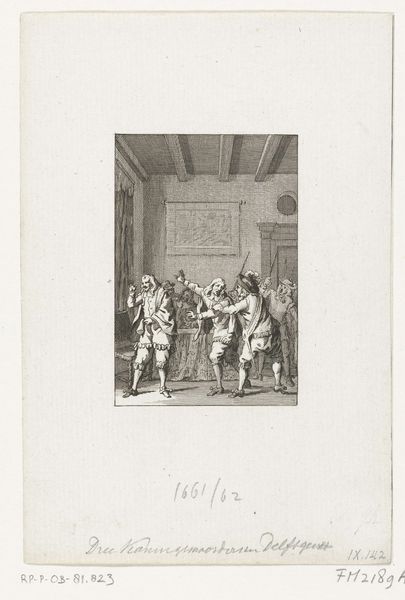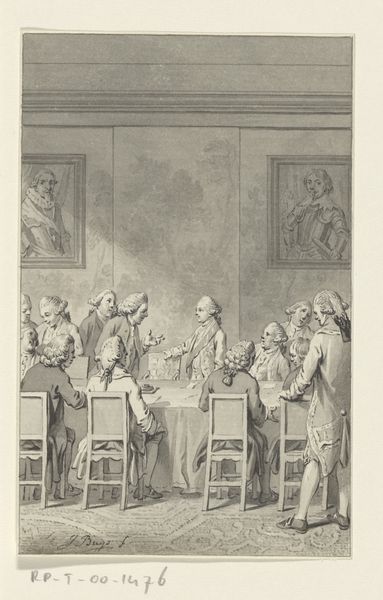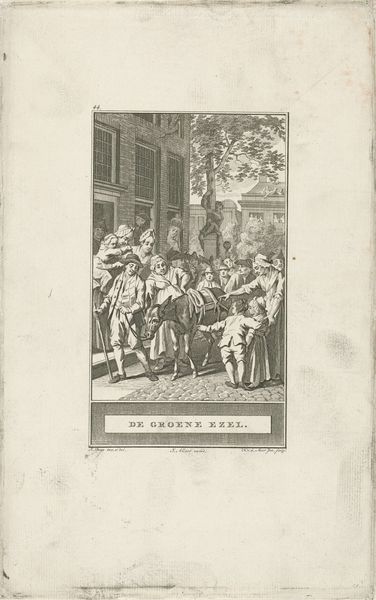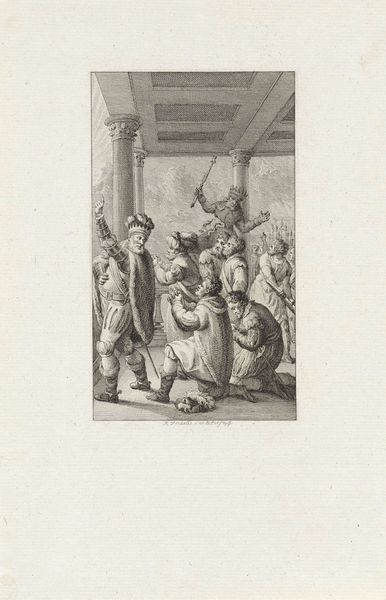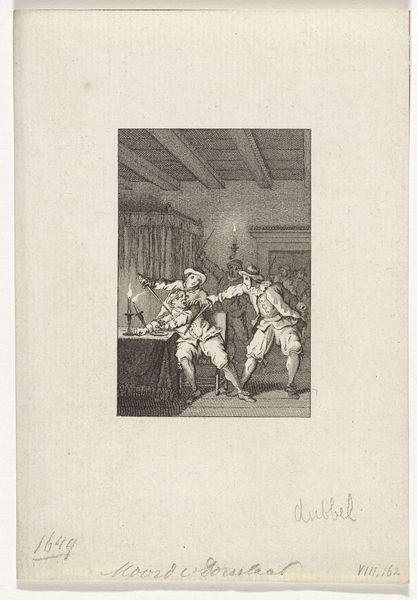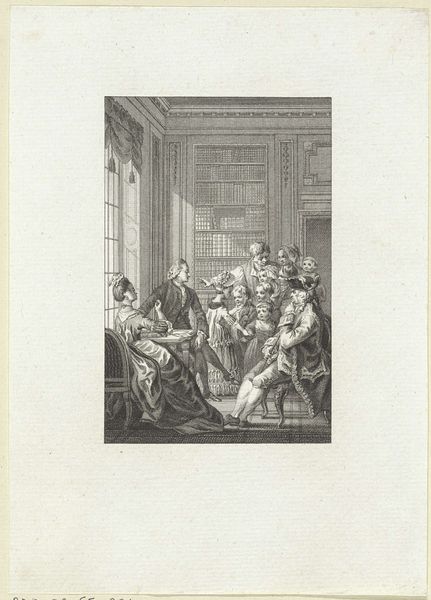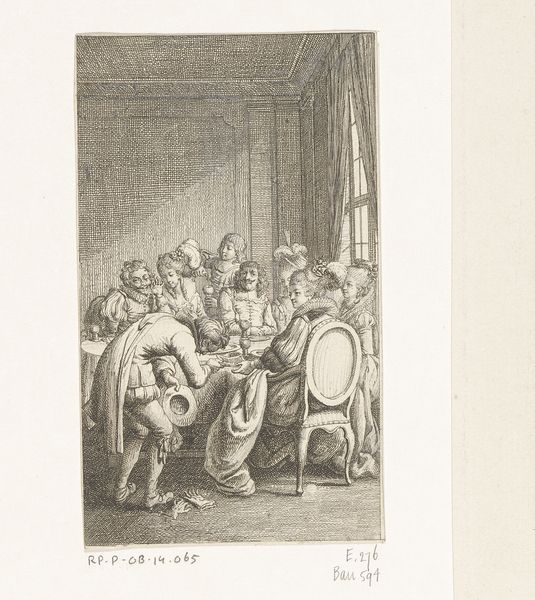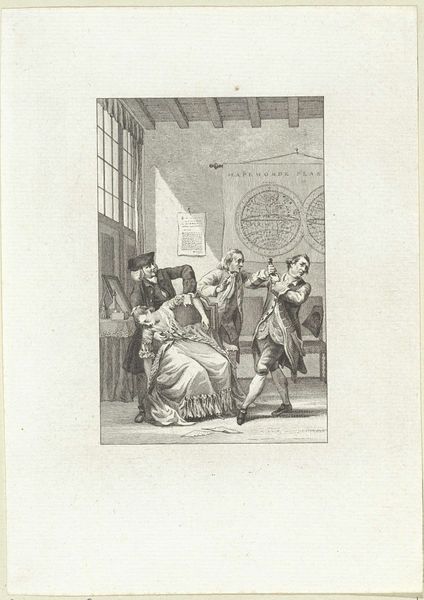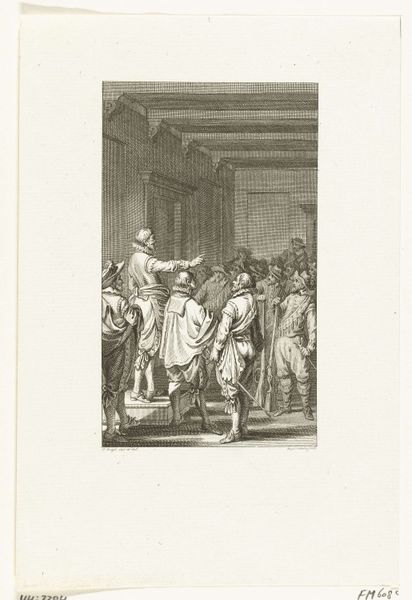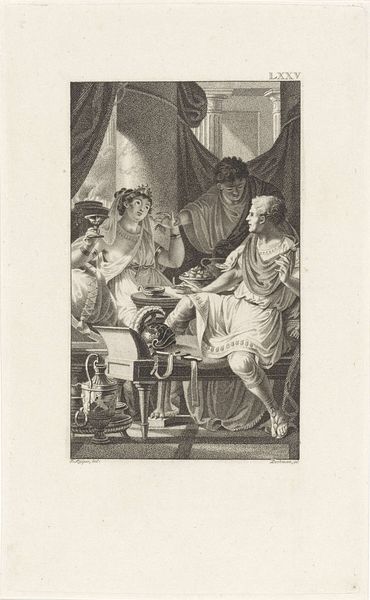
Wamba, koning van de Visigoten, tijdens een vergadering van bischoppen en edelen 1785
0:00
0:00
reiniervinkeles
Rijksmuseum
Dimensions: height 230 mm, width 150 mm
Copyright: Rijks Museum: Open Domain
Editor: So, here we have Reinier Vinkeles’ engraving from 1785, depicting “Wamba, King of the Visigoths, during a meeting of bishops and nobles.” The details are incredible, and it looks very serious. I wonder, what do you see in this depiction, particularly regarding its historical context and imagery? Curator: This piece really underscores how history paintings became vehicles for moral and political messages in the late 18th century. Think about the moment this was created. There’s a rising tide of Enlightenment ideals and growing challenges to established authority. What could this scene be communicating about leadership and power at that time? Editor: I guess showing a king at a meeting suggests some kind of dialogue or compromise, right? Less about absolute power and more about… consensus? Curator: Precisely. This engraving invites us to consider the shifting ideals around governance. The composition is so stage-like, the setting almost theatrical. In 1785, history painting served a very public role. The narratives, whether accurate or embellished, promoted civic virtue, critiqued abuse of power, and provided models for proper governance. The dissemination of such engravings like this one shaped public perception about their nation’s history, for better or worse. What strikes you about the setting itself? Editor: It's grand but also somewhat sparse. The characters seem more important than the location, actually. I didn't think about its public function before... Curator: Exactly. And how powerful it could be! So, what new insights do you gain from examining this engraving now? Editor: That art is more than what meets the eye, more so when contextualized within the socio-political context. This gives me a new perspective, looking at the engraving as an imprint in society and history. Curator: Indeed. Recognizing the historical setting really opens up how we read images and the stories they're telling.
Comments
No comments
Be the first to comment and join the conversation on the ultimate creative platform.

